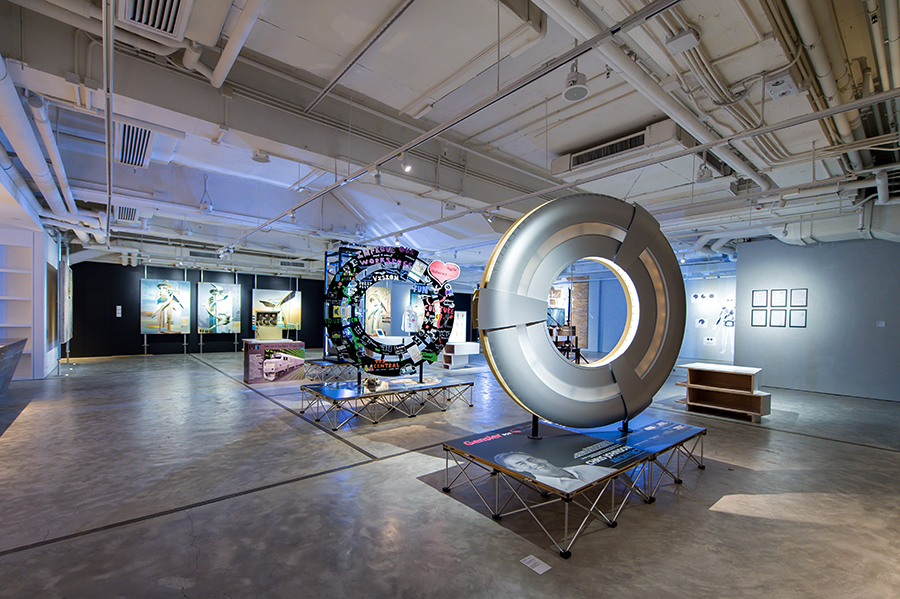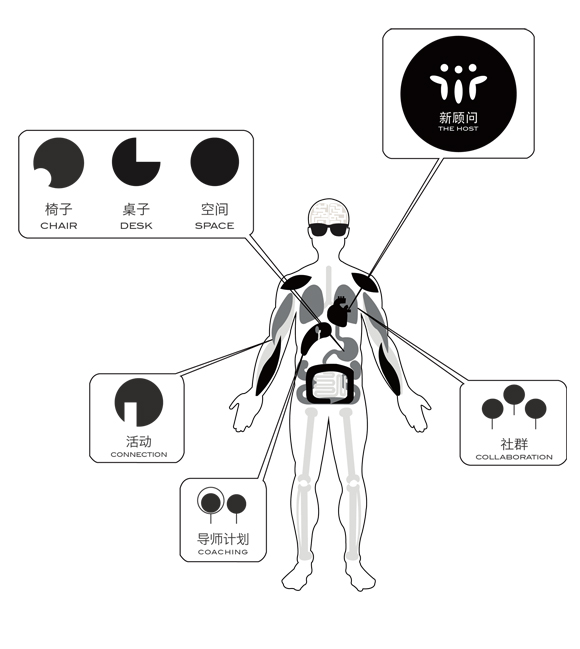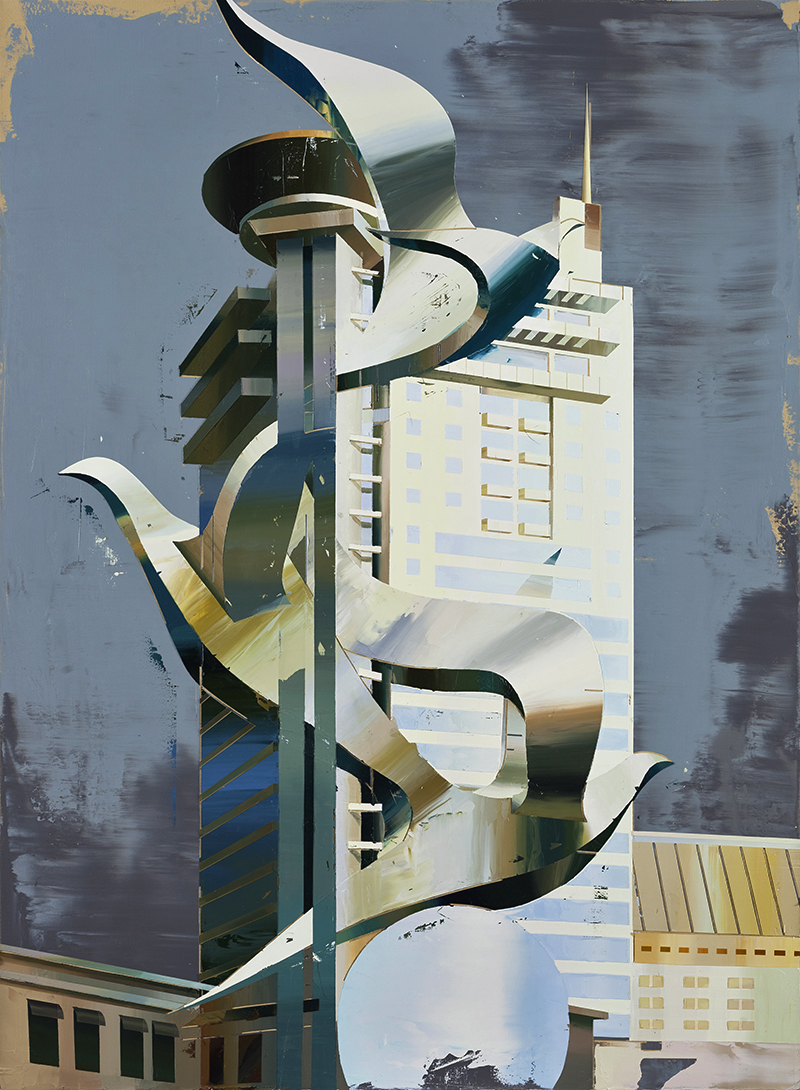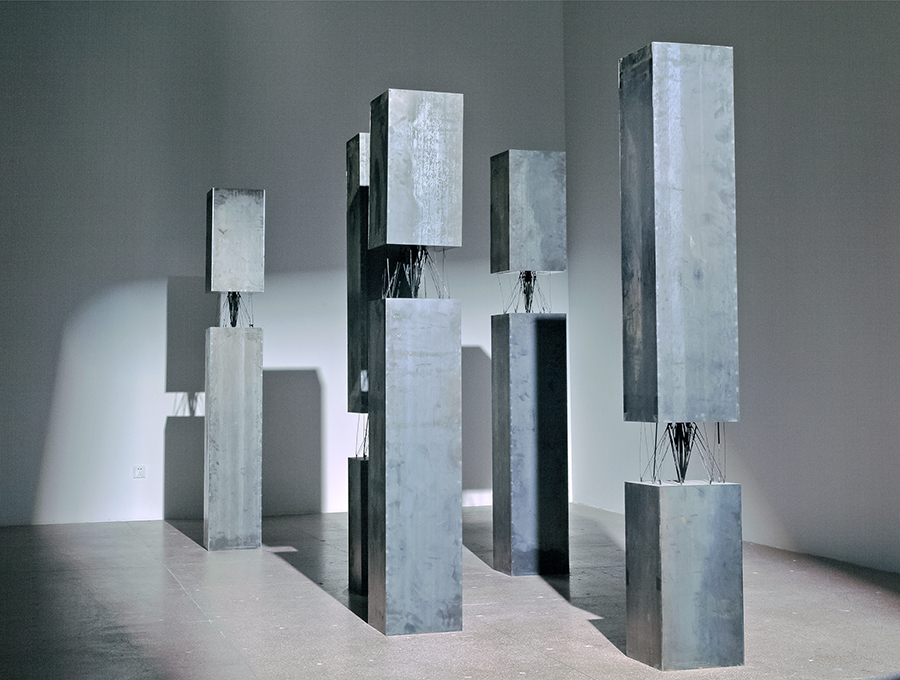Shows
Hack Space


When the Chinese term shan zhai entered into the country’s contemporary vocabulary, it was initially used as shorthand for the barrage of cheap, pirated goods flowing out of Shenzhen—also known as “China’s Silicon Valley.” Literally translated as “mountain-stronghold,” shan zhai was historically a reference for bandit groups working outside the realm of government control. Today, with the unprecedented success of formerly low-margin shan zhai companies, the term has extended to include foreign businesses encompassing a flexible, “open-source” corporate strategy. Tracing its etymology, however, the undercurrent of shan zhai remains largely unchanged: that is, a distinctly Chinese spirit of rebellion that embraces unconventional and risk-taking methods.
An exhibition co-organized by Hong Kong’s K11 Art Foundation and London’s Serpentine Galleries, “Hack Space” takes shan zhai as its broad ethos. Curated by Serpentine’s curator Amira Gad and co-director Hans Ulrich Obrist, the show marks the latter’s curatorial debut in Hong Kong. Presented at K11’s Sheung Wan pop-up space, as an expansion of New Zealand artist Simon Denny’s 2015 solo exhibition “Products for Organizing” at Serpentine Galleries, the show in Hong Kong attempts to enter Denny’s work into dialogue with that of 11 Chinese artists, whose artworks “cheat, flip [and] redefine” notions of space and creative practices.
For Denny, parallels can be drawn between hacker culture and shan zhai in the use of radical methods by both to undermine authoritative structures. His glass vitrines delineate a select narrative of hacker culture, beginning with its birthplace at Boston’s Massachusetts Institute of Technology. Computer hardware, plush toys and old hacker-slogan t-shirts sit on tiered shelves, displaying a tactile collection of paraphernalia that give form to the elusive data of the web and track pivotal moments of hacking history. The space of the exhibition itself is in a pre-renovated state, where architectural displays have been refashioned as plinths and the words “Shanzhai Holding Co.” appear on a banner tacked on the wall, setting out the industrialized aesthetic of the show. Denny’s Formalised Org Chart/ Architectural Model: GCHQ 3 Agile/Holacracy Workspace (2015) is a constructed model of corporate office floor-plans. The model is plastered with colorful words carved out in Plexiglas, such as “culture” and “fun,” displaying a brainstorm of workplace improvement ideas. The clip-art graphics of the sculpture sit in contrast to a streamlined version of the work that is installed directly in front of its counterpart. Corporate graphics also feature in Shanghai-based media artist aaajiao’s Xindanwei — One Company (2015), which is based on the eponymous co-working community and space that he had founded in China. A digital print of the company’s “Host” figure and an iPad, which directs viewers to Xindanwei’s website, shares the principles of communal coaching and collaboration that had served as the basis for the community.


The exhibition also presents a “historical hack” through six oil paintings by Beijing-based artist Cui Jie, which each depict fictional cityscapes. The unfinished look and muted palette of Building of Doves (2014) evoke nostalgia for the utopian dreams of a bygone era, and is somewhat akin to Russian-constructivist architect Tatlin’s unrealized 1920 plans for a monumental tower. Cui’s paintings are imbued with personal interpretations of the rapid transformation of China’s urban landscape following implementation of the country’s open policy in the 1980s. They also draw on historic associations, borrowing formal styles from Bauhaus architecture as well as the aesthetics of Chinese propaganda. Elsewhere, “political hacking” takes a humorous spin in the watercolor painting of Zhai Liang, which shows how to throw an egg at a protest, demonstrated step-by-step using the painted figure of a naked man.
Li Liao and Cao Fei offer a more critical response to China’s fast industrial developments and technological advancements. Shenzhen-based Liao’s Consumption (2012) resulted from a performance in which the artist worked for 45 days at Foxconn, a company that churns out electronic parts for global companies such as Apple. Foxconn became embroiled in controversy in 2014 when 14 of its employees committed suicide due to major labor abuses. In Consumption, Liao’s Foxconn ID card, labor contract and a 16 GB mini iPad (worth the sum of his wage), sit eerily on display as if in a history museum. In Fei’s video Rumba II: Nomad (2015) robotic vacuum cleaners navigate their way through the rubble of construction sites on the peripheries of China’s urban sprawl. The machines appear as though they are sentient life forms in their futile attempts to “clean” the ruined landscape. Occasionally, plastic chickens are seen perched atop the machines, and in one scene a disheveled man appears “shipwrecked” in his surroundings—an image that speaks to the sense of alienation often experienced in contemporary society.

Such surreal elements are also found in Tao Hui’s 1 Character & 7 Materials (2015–16), a video and sound installation in which a woman retells her tumultuous life story centered on the Yangtze River. While the viewer listens to her narration through headphones, seven random images appear on screen in a loop, creating an ebb and flow of shifting meaning as sound and images are overlaid in endless variations. What results is an unsettling physical experience as one’s aural and visual senses become disjointed, causing a disruption in one’s habitual thought patterns. Another commanding presence within the exhibition is Xu Qu’s installation Longevity (2014). Heavy, rusting metallic pillars are separated and reinforced by burnt umbrella spines, in a pensive meditation on the strength of grass-roots movements such as Hong Kong’s Umbrella Movement, which comprised a series of major political protests in 2014.
In a talk given at Art Basel Hong Kong this year, both curators and Denny ended their discussion of "Hack Space" with the observation that “everything is a hack.” This, indeed, becomes more apparent as the viewer makes their way through the exhibition. While each artwork arguably shows the act of hacking in one of many multifaceted forms, when viewed collectively it is clear that the specific concerns of each artist are quite individual. Their respective ideas, however, become somewhat diluted under the exhibition’s overarching theme, and within the constraints of the conversation dynamic that is set up between the works of Denny and the Chinese artists. This is likely, because, while extensive research and multiple studio visits were conducted between the curators and Denny, most of the other artworks were previously made and exhibited under different contexts. Thus, the dialogue between the two groups of works was built by forming associations rather than from the ground up. However, the exhibition did showcase compelling works of active, young Chinese artists and their innovative and unorthodox practices resonate with the exhibition’s broader shan zhai theme.
“Hack Space” is on view at K11 Art Foundation Pop-Up Space, Hong Kong, until April 24, 2016.







